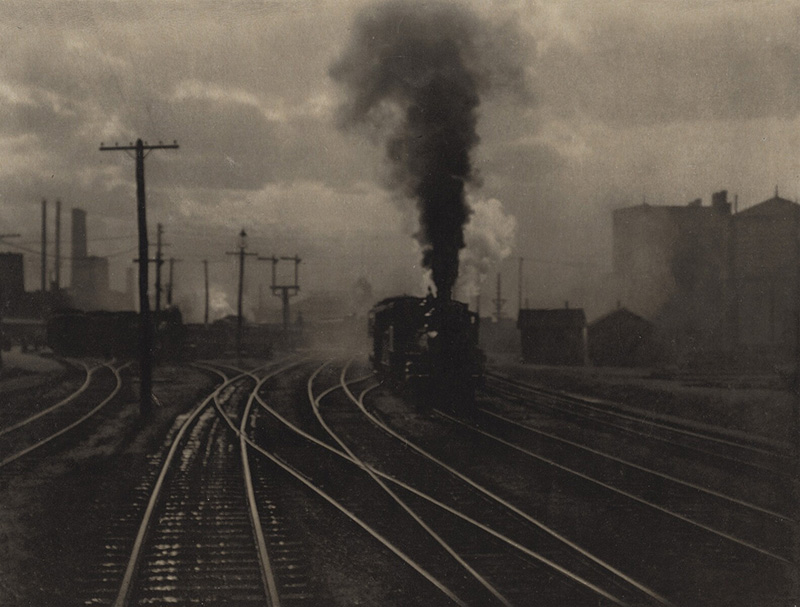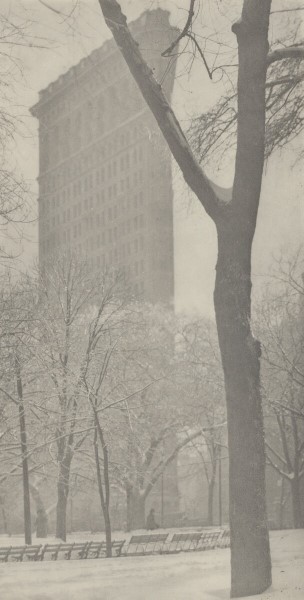When Alfred Stieglitz returned to the United States from Germany in 1890, he made New York City his central subject. He walked the streets with a handheld camera, which allowed for more spontaneity than a large camera mounted on a tripod. He concentrated, as he had in Europe, mainly on working-class scenes of daily life, albeit now conveyed with a greater immediacy (Key Set number 77).
Stieglitz soon realized that technical challenges other photographers largely shied away from, such as rain, snow, and low light, could be a boon to his picture-making. Although such conditions were difficult to work in, they helped unify compositions, softened the unruly city, and tied it to nature. In 1893 he made his first “snow picture” of a stagecoach driving down Fifth Avenue in a blizzard (Key Set number 82). The next day, he came upon a streetcar driver washing down his horses; the steam rising from their overheated backs resembles mist over a lake (Key Set number 92). In his quiet night pictures of 1897–1898, the city, invariably robed in rain or snow, feels nearly empty, with the compositions dominated by trees and the halation of distant lights (Key Set number 257).



